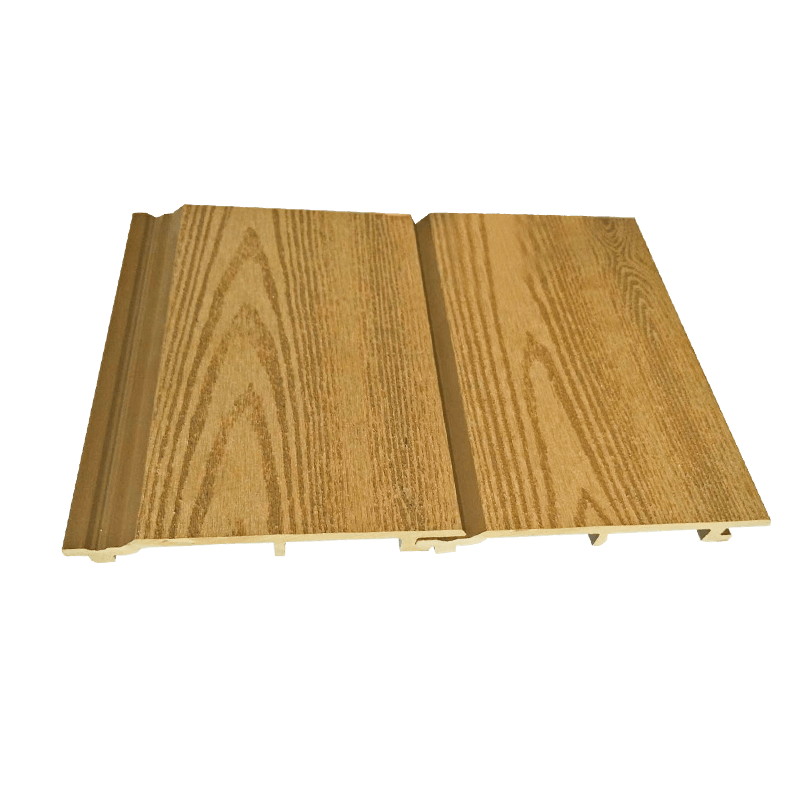Provide you with the latest enterprise and industry news.
In recent years, the construction and interior design industries have seen a significant shift towards more sustainable and durable materials. One such innovation that has gained widespread popularity is the Plastic Wood WPC (Wood Plastic Composite) Wall Panel. These panels offer a combination of the aesthetic appeal of wood with the enhanced durability and low maintenance of plastic. As consumers and builders increasingly prioritize sustainability and functionality, the demand for WPC wall panels has skyrocketed.
These panels are commonly used in both indoor and outdoor applications, offering a stylish and sustainable alternative to conventional wooden panels. Due to their composite nature, WPC wall panels combine the best properties of wood and plastic, making them suitable for a wide range of building and design projects.
Sustainability and Eco-Friendliness: One of the most significant advantages of WPC wall panels is their environmental benefits. By incorporating recycled wood fibers and plastic, WPC products help reduce the demand for virgin wood, conserving forests and promoting sustainability. Furthermore, WPC materials are often fully recyclable at the end of their lifespan, making them an eco-friendly choice for environmentally conscious consumers and builders.
Durability and Weather Resistance: Unlike traditional wood, WPC wall panels are highly resistant to moisture, mold, and mildew. This makes them an excellent choice for areas with high humidity, such as bathrooms, kitchens, and outdoor spaces. They also resist warping, cracking, and fading over time, ensuring that the panels retain their appearance and functionality for years. This durability makes them ideal for use in both residential and commercial applications.
Low Maintenance: One of the most appealing features of Plastic Wood WPC Wall Panels is their minimal maintenance requirements. Unlike traditional wood, which may need regular sealing, staining, or painting, WPC panels require only occasional cleaning to maintain their appearance. They do not need to be treated for termites or other pests, and their resistance to moisture eliminates concerns about rot or swelling. This makes WPC panels a cost-effective and hassle-free option for homeowners and businesses.

Aesthetic Appeal: WPC wall panels offer the natural beauty of wood without the associated drawbacks. They come in a variety of colors, textures, and finishes, allowing designers and architects to achieve the look of real wood while benefiting from the durability and low maintenance of plastic. With options ranging from traditional wood grain to modern sleek finishes, WPC panels can complement any design style, whether it’s contemporary, rustic, or minimalist.
Fire Resistance: Many WPC wall panels are treated with fire-retardant chemicals, making them more resistant to fire than traditional wood. This added safety feature is particularly beneficial in commercial and industrial applications, where building codes and safety standards require materials that reduce the spread of fire.
Cost-Effectiveness: While the initial cost of WPC wall panels can be higher than that of basic plywood or MDF panels, the long-term cost savings can be significant. Their durability and low maintenance reduce the need for repairs or replacements, offering a better return on investment over time. Additionally, the ease of installation can reduce labor costs compared to traditional wood paneling.
Interior Wall Cladding: WPC wall panels are increasingly used in the interior design of homes and commercial spaces. They can be installed in living rooms, bedrooms, offices, and corridors, providing a stylish and sustainable alternative to traditional wall coverings like wallpaper, paint, or drywall. Their aesthetic appeal and ability to mimic the look of real wood make them an excellent choice for modern, eco-conscious interiors.
Exterior Wall Cladding: The durability and weather resistance of WPC panels make them perfect for exterior applications. They are commonly used for cladding the exterior of buildings, adding a sleek, natural look while offering protection against the elements. WPC panels can withstand the harsh effects of sun, rain, and wind, maintaining their appearance and functionality for years without the need for frequent maintenance.
Fencing and Decking: WPC materials are widely used in outdoor projects like fencing, decking, and garden walls. Their resistance to moisture and pests makes them a long-lasting and attractive solution for landscaping and outdoor construction. WPC fences, for instance, offer privacy and security while providing the timeless look of wood without the upkeep.
Commercial Spaces: WPC wall panels are an excellent choice for commercial spaces, including offices, hotels, restaurants, and retail environments. The panels not only provide a professional, polished look but also help in creating an eco-friendly image for businesses that are looking to attract environmentally conscious customers. In high-traffic areas, WPC panels' durability and resistance to wear ensure they continue to perform well over time.
Partition Walls: In both residential and commercial settings, WPC panels are used to create partition walls. These walls offer a quick and cost-effective way to divide spaces while maintaining a high-end look. The lightweight nature of WPC panels makes them easy to install and relocate as needed, providing flexibility for changing room layouts.
As demand for sustainable building materials continues to grow, Plastic Wood WPC Wall Panels are likely to play a significant role in the future of construction and design. With further advancements in manufacturing techniques, the performance and aesthetic options for WPC panels will only improve. Additionally, as the focus on reducing environmental impact intensifies, the use of recycled materials in WPC production will increase, making these panels an even more sustainable choice for builders and consumers.



 English
English Español
Español














